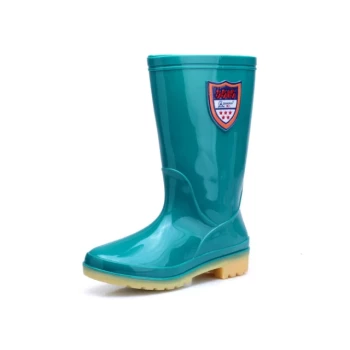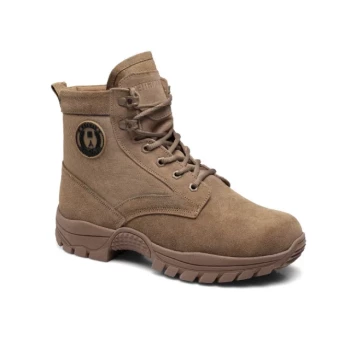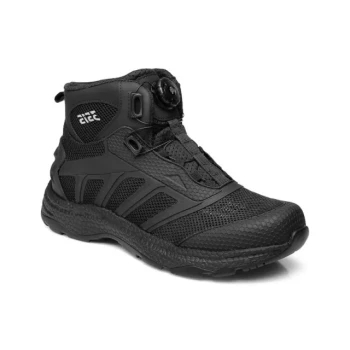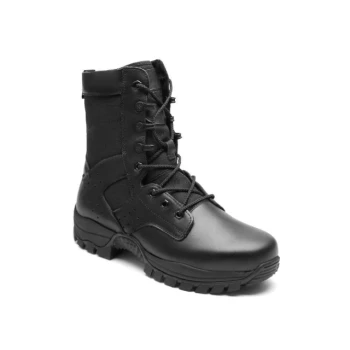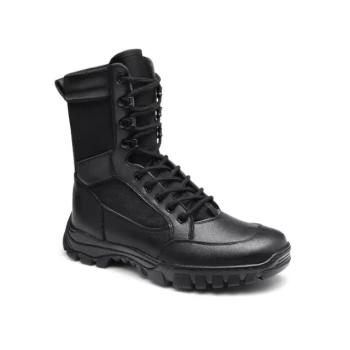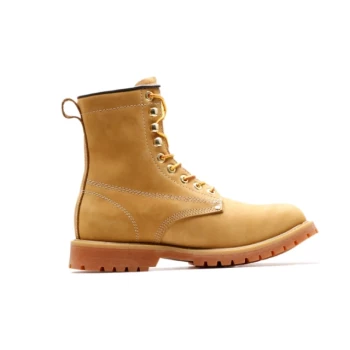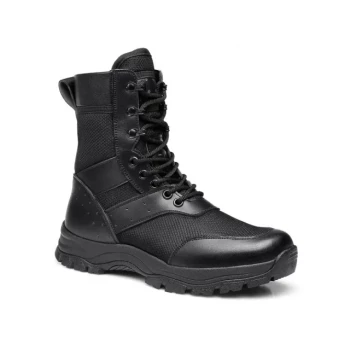When selecting winter boots, the material of the sole is the single most critical factor for safety and comfort. Rubber soles provide an essential combination of benefits uniquely suited for harsh winter conditions: superior slip-resistance for traction on ice and snow, inherent waterproof properties to keep your feet dry, and crucial insulation from the cold ground.
The core function of a winter boot is to create a stable, dry, and warm barrier against the elements. Rubber is the industry standard for soles because its material properties are engineered to deliver on all three of these critical requirements, making it the foundation of reliable winter footwear.
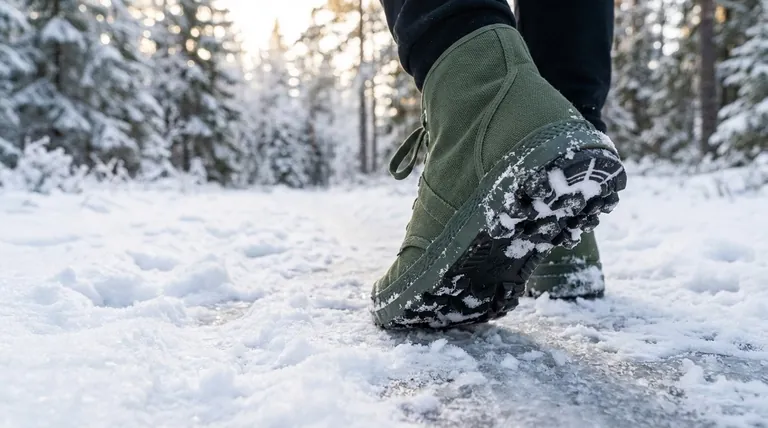
The Foundation of Winter Safety: Superior Traction
Navigating icy or snowy surfaces demands a sole that can maintain a secure grip. Rubber excels in this area due to a combination of material science and intelligent design.
The Role of Material Flexibility
Unlike rigid plastics that can become brittle and slick in the cold, rubber maintains its natural elasticity. This flexibility allows the sole to conform to uneven, frozen surfaces, maximizing surface contact and grip.
The Engineering of Lug Soles
Most high-quality winter boots feature lug soles—a pattern of deep, wide grooves in the rubber. These lugs act like teeth, biting into snow and uneven ice. The channels between them are designed to efficiently move water and slush away, preventing a layer of liquid from forming that could cause hydroplaning and slips.
Natural Slip-Resistance
Rubber naturally has a high coefficient of friction. This inherent "stickiness" provides a baseline level of grip that other materials struggle to match, offering you more stability with every step.
An Impenetrable Barrier Against Wet Conditions
Staying dry is just as important as staying upright in the winter. Once moisture penetrates your boot, insulation becomes ineffective and the risk of frostbite increases dramatically.
Why Rubber is Inherently Waterproof
Rubber is a non-porous material. This means it creates a completely watertight barrier that prevents snow, slush, and water from seeping into the boot's interior. This protection is a fundamental property of the material itself.
Preserving Insulation and Comfort
By preventing moisture from reaching the boot's inner layers, a rubber sole ensures that your insulation (like wool or Thinsulate) remains dry and effective. This is critical for maintaining warmth and overall comfort during prolonged exposure to cold.
Insulation: Keeping the Cold Out
Your feet lose a significant amount of heat to the frozen ground through a process called conduction. A proper sole must act as an insulator to stop this heat loss.
Preventing Conductive Heat Loss
Rubber is a poor conductor of heat. This property creates a thermal break between your foot and the cold ground, dramatically slowing the rate at which heat escapes.
The Importance of Sole Thickness
A thicker rubber sole provides more material and thus more insulation. This is why boots designed for extreme cold or stationary activities like ice fishing often feature exceptionally thick, heavy-duty rubber soles.
Common Pitfalls and Trade-offs
While rubber is the superior choice for winter soles, it's important to understand its characteristics fully to make an informed decision.
Sole Weight
Durability and insulation often come with mass. High-quality, thick rubber soles can be heavier than soles made from lighter foam or synthetic compounds. This is a direct trade-off for their superior performance and longevity.
Breathability
The same non-porous quality that makes rubber waterproof also means it isn't breathable. This is why rubber is almost always paired with breathable upper materials, like leather or treated textiles, which allow moisture from sweat to escape.
Not All Rubber is Equal
There are variations in both natural and synthetic rubber compounds. Lower-quality rubber may harden and crack in extreme cold or wear down more quickly. Investing in a boot from a reputable manufacturer ensures the rubber compound is optimized for durability and cold-weather flexibility.
How to Apply This to Your Search
Your specific needs should guide your final choice. Use the sole as your primary indicator of a boot's intended purpose.
- If your primary focus is safety on icy city streets: Look for a flexible rubber sole with a complex, multi-directional lug pattern for maximum grip from any angle.
- If your primary focus is warmth during stationary outdoor activity: Prioritize a boot with an exceptionally thick rubber sole to maximize the insulating barrier between you and the frozen ground.
- If your primary focus is navigating deep snow and slush: Ensure the waterproof rubber construction extends beyond just the sole, creating a "shell" around the lower part of the boot.
Ultimately, a well-constructed rubber sole is the non-negotiable foundation of any truly effective and safe winter boot.
Summary Table:
| Benefit | Key Feature | Why It Matters in Winter |
|---|---|---|
| Traction & Grip | Flexible lug soles | Bites into ice and snow, preventing slips and falls |
| Waterproof Barrier | Non-porous material | Keeps feet dry by blocking snow, slush, and water |
| Ground Insulation | Poor heat conductor | Slows heat loss to the frozen ground, keeping feet warm |
| Durability | Cold-weather optimized compounds | Resists cracking and wear in harsh conditions |
Ready to source high-performance winter boots with superior rubber soles?
As a large-scale manufacturer, 3515 produces a comprehensive range of footwear for distributors, brand owners, and bulk clients. Our production capabilities encompass all types of shoes and boots, including winter boots engineered with the advanced rubber soles described in this article. We ensure durability, safety, and comfort for your customers.
Contact 3515 today to discuss your manufacturing needs and get a quote. Let us help you deliver the reliable winter footwear your market demands.
Visual Guide
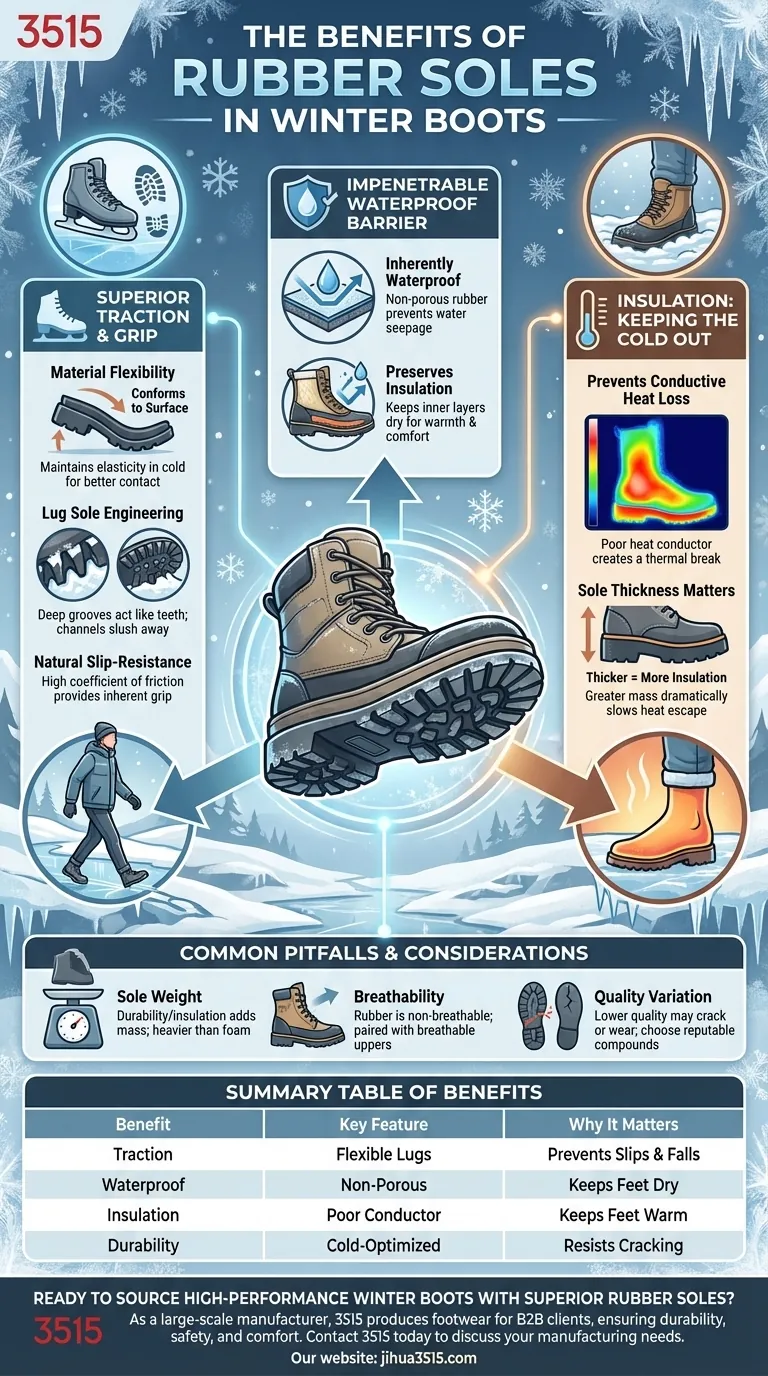
Related Products
- Factory-Direct Wholesale Canvas Boots with High-Traction Rubber Soles
- Factory Direct Wholesale Rain Boots Durable Waterproof & Fully Customizable
- Wholesale Waterproof Tactical Boots Custom Suede & High-Traction Soles
- Puncture-Resistant Velcro Safety Boots for Wholesale & Custom Manufacturing
- Wholesale Leather Work Boots with Customizable Wedge Sole for Brands
People Also Ask
- What is a vulcanized sole? Discover the Secret to Superior Flexibility and Grip
- Why are rubber soles beneficial in cold-weather boots? Superior Traction & Waterproofing
- What should be avoided when storing boots with outsoles? Protect Your Investment from Dry Rot & Decay
- What factors determine the slip resistance of rubber-soled shoes? Tread, Compound & Design Explained
- What types of rubber are typically employed in non-slip footwear soles? Your Guide to Maximum Grip and Safety

